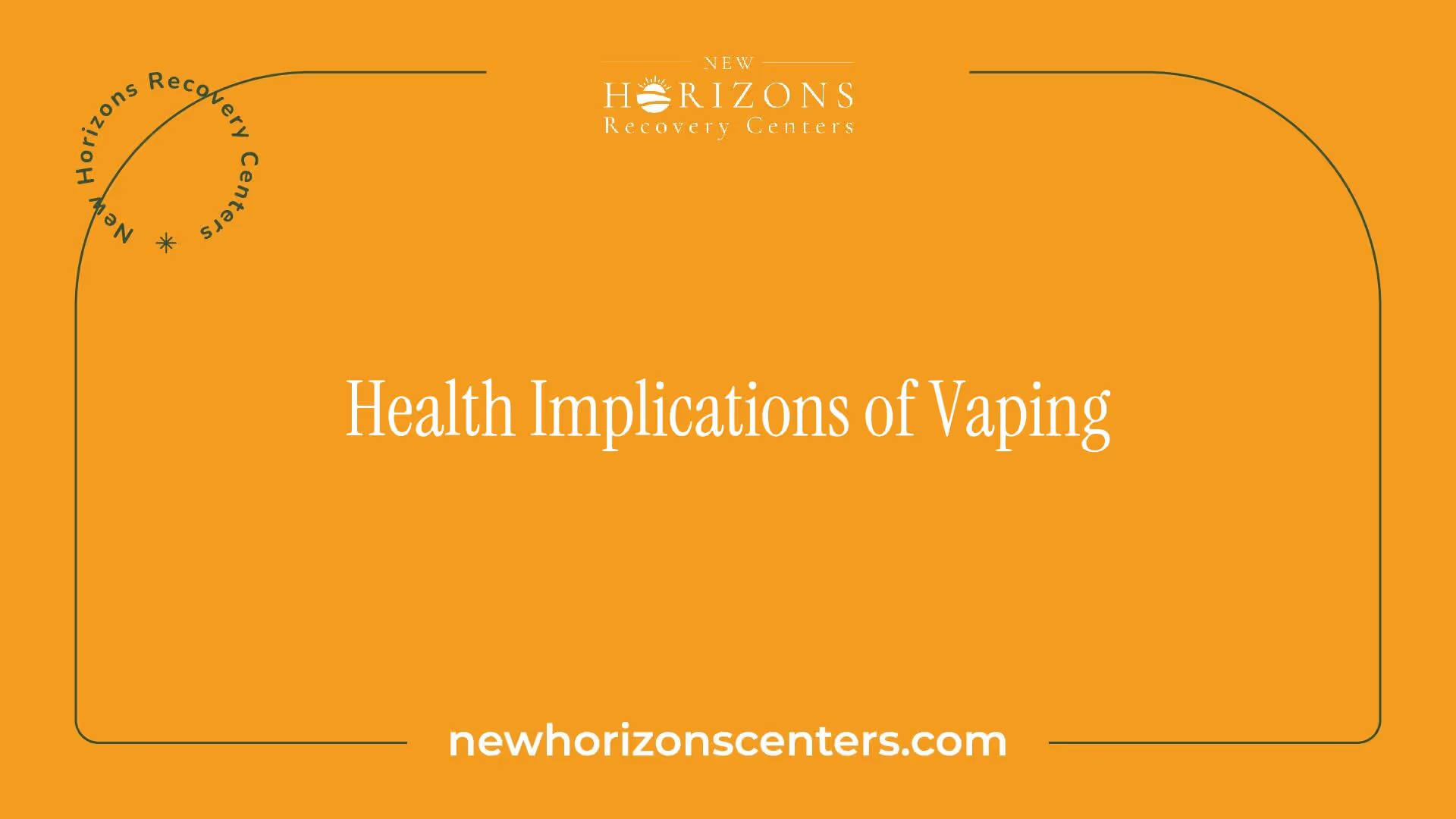Understanding Vaping Statistics

When delving into vaping statistics, it is crucial to examine the trends in youth vaping and the phenomenon of dual use behavior, shedding light on the prevalence and habits surrounding e-cigarette use among young individuals.
Vaping Trends in Youth
E-cigarettes emerged as the most commonly used tobacco product among middle and high school students in the United States in 2023, as reported by the CDC. This trend signifies the popularity and widespread adoption of vaping among the younger demographic. Despite this prevalence, it is noteworthy that a significant portion of middle and high school students who vape express a desire to quit, with many attempting to do so in 2020.
The surge in vaping among teens in 2017 has raised public health concerns, given the addictive nature of e-cigarettes. Studies have indicated that early nicotine addiction from vaping can impair brain development and alter nerve cell functioning. Furthermore, research has shown that young adults who engage in vaping are more likely to transition to combustible tobacco cigarettes, emphasizing the potential gateway effect of e-cigarettes.
Dual Use Behavior
A notable trend observed among young people who vape is the practice of dual use, where individuals simultaneously use other tobacco products such as cigarettes and cigars alongside e-cigarettes. This dual use behavior was prevalent among many young vapers in 2020, as highlighted by the CDC. The co-usage of multiple tobacco products underscores the complexity of vaping habits and the interplay between different forms of tobacco consumption among the youth population.
Additionally, findings from a study in 2016 revealed that nearly one in three U.S. middle and high school students who had used an e-cigarette reported using marijuana in the device, indicating a concerning overlap between vaping and substance use among adolescents. This intersection of vaping with other substances underscores the need for comprehensive strategies and regulatory measures to address the multifaceted challenges posed by youth vaping behaviors.
Health Implications of Vaping

Exploring the health implications of vaping is crucial in understanding the risks associated with e-cigarette use. This section delves into the nicotine content in e-cigarettes and the potential health risks linked to their usage.
Nicotine Content in E-Cigarettes
Most e-cigarettes, or vapes, contain nicotine, a highly addictive substance with known adverse health effects. Nicotine poses unique dangers to youth as their brains are still developing, making them more susceptible to addiction. Understanding the nicotine content in e-cigarettes is essential, as it plays a significant role in the addictive nature of these products.
Health Risks of E-Cigarette Use
While e-cigarette aerosol generally contains fewer harmful chemicals compared to the complex mix of 7,000 chemicals in cigarette smoke, it does not equate to safety. Scientists are continuously studying the immediate and long-term health effects of e-cigarette use. The uncertainties surrounding the health risks emphasize the importance of caution when using these products.
Dual use of e-cigarettes and traditional cigarettes is not a recommended strategy for safeguarding health. In fact, it may lead to greater exposure to toxins and worse respiratory health outcomes than using either product alone [3]. Moreover, instances of seizures have been reported among e-cigarette users, predominantly involving youth or young adults.
The link between vaping and mental health is also a growing concern, especially among youth. Symptoms such as depression have been associated with youth vaping and cigarette use. Nicotine addiction or withdrawal can exacerbate these mental health issues, underscoring the need for comprehensive understanding and awareness of the potential consequences.
By acknowledging the nicotine content in e-cigarettes and the associated health risks, individuals can make informed decisions regarding their vaping habits and prioritize their well-being. Stay informed about the evolving research on vaping to protect yourself and others from the potential health implications of e-cigarette use.
Mental Health and Vaping

The relationship between vaping and mental health is an area of growing concern, especially among the youth demographic. Let's explore the association between vaping and mental health symptoms, as well as the implications of nicotine addiction and withdrawal.
Association with Mental Health Symptoms
According to the CDC, youth who engage in vaping and cigarette use may experience mental health symptoms such as depression. The use of nicotine-containing products can exacerbate these symptoms or lead to adverse mental health effects. It is essential to recognize the potential impact of vaping on mental well-being, particularly in vulnerable populations.
Nicotine Addiction and Withdrawal
Nicotine addiction is a significant concern associated with vaping. The addictive nature of nicotine can lead to dependence, making it challenging for individuals to quit vaping or using tobacco products. Moreover, nicotine withdrawal symptoms can manifest when attempting to reduce or stop vaping, further impacting mental health.
It is crucial to address the interplay between vaping, nicotine addiction, and mental health to provide comprehensive support for individuals struggling with these issues. Awareness of the potential consequences of vaping on mental well-being is essential for promoting holistic health practices.
By understanding the link between vaping and mental health symptoms, as well as the challenges of nicotine addiction and withdrawal, we can better address the complexities of addiction and mental well-being in the context of vaping statistics. For more statistics on addiction-related topics, such as binge drinking and social media addiction, stay informed with reliable data sources.
National Data on Vaping

When analyzing vaping statistics, it is crucial to understand the patterns of e-cigarette usage across different age groups, as well as the variations by race and income levels. These insights provide valuable information for public health interventions and targeted awareness campaigns.
Usage Among Different Age Groups
In the United States, data from 2021 indicates that young adults aged 18–24 represented the age group most likely to use e-cigarettes among all adults. This trend highlights the significance of addressing vaping behaviors within this demographic to mitigate potential health risks and addiction concerns.
Moreover, adults in the age groups of 18–24 and 25–44 demonstrated a higher likelihood of being dual users of both e-cigarettes and traditional cigarettes compared to adults aged 45 and above. This dual use behavior emphasizes the importance of comprehensive tobacco control strategies that target multiple forms of nicotine consumption to reduce overall harm.
Variation by Race and Income
Vaping trends also exhibit variations based on race and income levels in the United States. In 2021, the percentage of adults who were current e-cigarette users differed across various racial and Hispanic origin groups. These disparities underscore the importance of considering cultural and ethnic factors when designing public health campaigns and policies to address vaping prevalence [4].
Furthermore, the prevalence of e-cigarette use among adults displayed an inverse relationship with family income. As family income increased, the percentage of adults using e-cigarettes decreased. This socioeconomic gradient in vaping behavior highlights the need for targeted interventions that account for economic disparities and access to alternative cessation resources.
Understanding the nuances of e-cigarette usage across different age groups, races, and income brackets is essential for formulating evidence-based strategies to combat the rising trend of vaping. By addressing these disparities and tailoring interventions to specific demographic groups, public health authorities can work towards reducing the prevalence of vaping and its associated health risks in the population.
Public Health Concerns

Public health concerns surrounding vaping have garnered significant attention in recent years, with a particular focus on two key issues: the EVALI outbreak and the risks associated with vaping compared to smoking.
EVALI Outbreak
In late 2019 and early 2020, the United States experienced an outbreak of E-cigarette or Vaping Product Use-Associated Lung Injury (EVALI), resulting in thousands of hospitalizations and at least 68 reported deaths. While cases of EVALI have been on the decline, individuals who vape are still at risk of developing this serious condition. Notably, severe EVALI cases were predominantly observed in individuals under 35 who used THC-containing vapes from informal sources [5].
Risks of Vaping Compared to Smoking
Although vaping is often perceived as a safer alternative to smoking traditional cigarettes, it is not without its own set of health risks. Both vaping and smoking are addictive behaviors that introduce potentially harmful chemicals into the body. While burned tobacco may contain higher levels of certain chemicals, the long-term health effects of vaping are still not fully understood. Vaping can lead to a range of short-term side effects, including breathing problems, organ damage, addiction, and other conditions. The particles inhaled while vaping can cause inflammation and irritation in the lungs, potentially resulting in lung damage such as scarring and narrowing of air passages.
It is crucial to recognize that vaping poses significant risks to public health, and the perception of vaping as a safer alternative to smoking should be carefully reconsidered. Despite recent declines in overall tobacco product use among U.S. high school students, primarily driven by a decrease in e-cigarette use, the potential health consequences of vaping remain a significant concern. By staying informed about the risks associated with vaping and supporting comprehensive efforts and regulations aimed at reducing vaping-related harm, we can work towards safeguarding public health and well-being.
Efforts and Regulations
When it comes to addressing the challenges posed by vaping, the impact of comprehensive strategies and the importance of FDA regulations play a significant role in shaping public health outcomes.
Impact of Comprehensive Strategies
Since 2014, e-cigarettes have been the most used tobacco product among U.S. youth, emphasizing the need for comprehensive tobacco prevention and control strategies at the national, state, and local levels. These strategies encompass a range of interventions, including education campaigns, policy changes, and community-based initiatives aimed at curbing youth access to and use of e-cigarettes.
Comprehensive strategies also focus on addressing the evolving landscape of e-cigarette products. A recent report on the public health consequences of e-cigarettes highlights the challenge consumers face in discerning differences between products and their relative harms. To address this issue, regulatory efforts are essential to inform consumers about less harmful products and effective nicotine delivery methods. Organizations like Truth Initiative advocate for the FDA to expedite the full regulation of e-cigarettes to enhance consumer awareness.
Importance of FDA Regulations
The FDA plays a crucial role in regulating the sale and marketing of tobacco products, including e-cigarettes. Recent data from the FDA indicates a positive trend in reducing overall tobacco product use among high school students, driven primarily by a decrease in e-cigarette usage. Efforts to regulate the availability and promotion of e-cigarettes have resulted in a reduction of 580,000 high school students using e-cigarettes in 2023.
However, challenges remain, particularly concerning middle school students, where there has been an increase in overall tobacco product use as well as multiple tobacco product use. This underscores the ongoing need for stringent regulations and enforcement to protect youth from the harms of tobacco and nicotine products.
In conclusion, the collaborative efforts of implementing comprehensive strategies and enforcing FDA regulations are essential in mitigating the public health risks associated with vaping. By prioritizing youth prevention and regulation of e-cigarette products, strides can be made towards creating a healthier environment and reducing the prevalence of vaping among the younger population.
References
[2]:
[3]:
[4]:
[5]:
[6]:
[7]:

-ink.jpeg)
-ink.jpeg)

-ink.jpeg)


